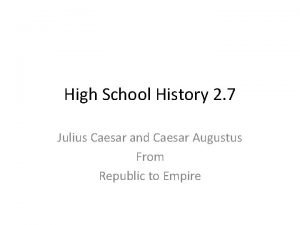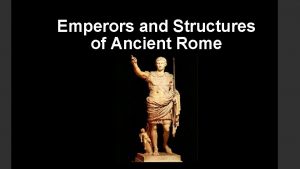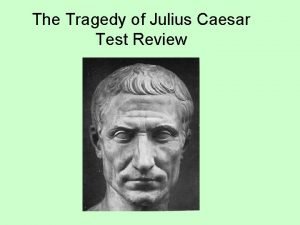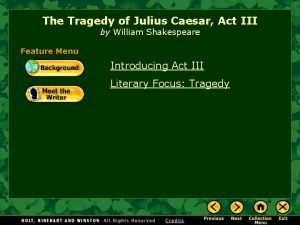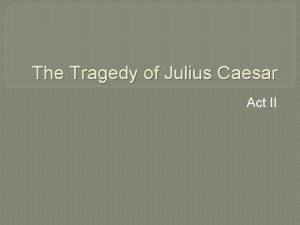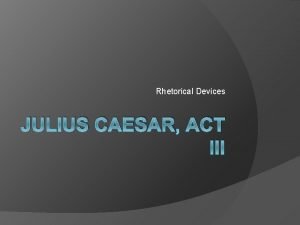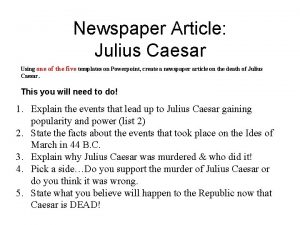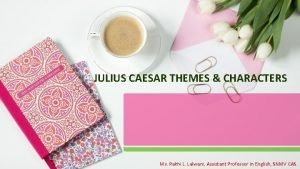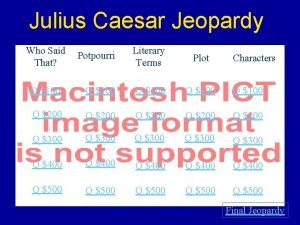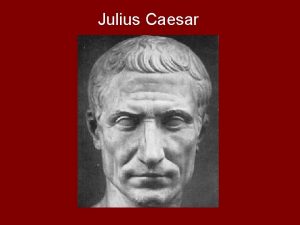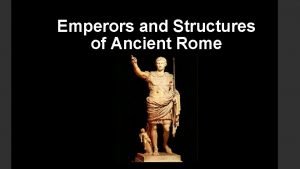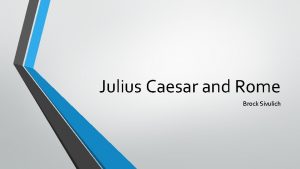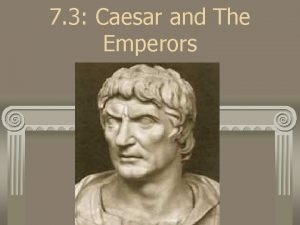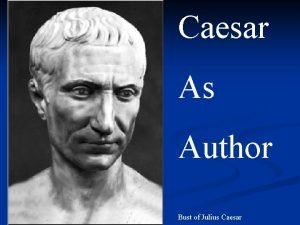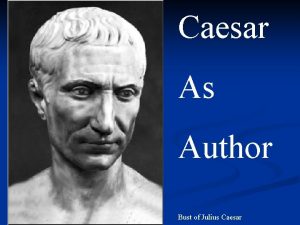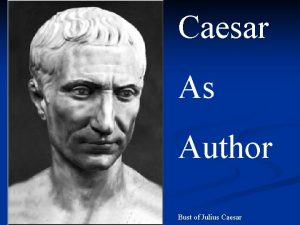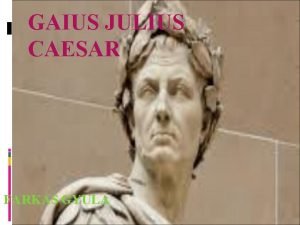Emperors and Structures of Ancient Rome Julius Caesar










- Slides: 10

Emperors and Structures of Ancient Rome

Julius Caesar • Expanded the Roman Republic through a series of battles across Europe before declaring himself dictator for life • Devoted his energies to the conquest of Gaul (modern France) • He died famously on the steps of the Senate at the hands of political rivals. • Julius Caesar is often remembered as one of the greatest military minds in history and credited with laying the foundation for the Roman Empire.

Augustus Caesar • As the first Roman emperor (though he never claimed the title for himself), Augustus led Rome’s transformation from republic to empire following the assassination of his great-uncle and adoptive father Julius Caesar. • He laid the foundations of the 200 -year Pax Romana (Roman Peace) and an empire that lasted, in various forms, for nearly 1, 500 years. • Augustus Caesar died in A. D. 14, his empire secured and at peace. His reported last words were, “I found Rome of clay; I leave it to you of marble. ”

Hadrian • Viewed as the best of the “good emperors”. • Worked hard to build a good government • Issued a code of laws so that all were the same across the empire. Protected women, children, and slaves. • Commissioned many building and other structures, including a great wall which parts still stand in Britain.

Diocletian • He was perhaps both a good and bad emperor • With the Roman Empire growing too large, he split the Roman Empire into two sections; the Eastern Roman Empire and the Western Roman Empire • The split made Rome easier to manage and defend • He also persecuted and killed many people, especially Christians, because of their religion


Caligula • He started his rule well overturning many exiles, abolishing various taxes and gratified the people with spectacles and gifts • After he had reigned for eight months he became severely ill. Upon his recovery his mind seemed to have been fatally damaged • He became cruel and almost crazy (walked the streets dressed as various gods, made his horse a consul)

Nero • The first five years of the reign of Nero were marked by the mildness and equity of his government. He discouraged luxury, reduced the taxes, and increased the authority of the Senate. • He is usually referred to the cruelest of the Roman emperors • The intentional burning of Rome is viewed as his worst crime. Rumor is he played musical instruments as it burned down. • Nero did decide to blame the burning on the Christians, and inflicted upon them terrible cruelties and punishments

The Colosseum • Measuring some 620 by 513 feet (190 by 155 meters), the Colosseum was the largest amphitheater in the Roman world • Inside, the Colosseum had seating for more than 50, 000 spectators, who may have been arranged according to social ranking • Hosted gladiatorial combats, hunts, wild animal fights and larger combats such as mock naval engagements (for which the arena was flooded with water)

Aqueducts • The Romans constructed aqueducts to bring a constant flow of water from distant sources into cities and towns • Aqueducts moved water through gravity alone, along a slight downward gradient within conduits of stone, brick or concrete.
 Have i played the part well then applaud me as i exit
Have i played the part well then applaud me as i exit Caesar (title)
Caesar (title) Julius caesar family tree
Julius caesar family tree The tragedy of julius caesar unit test review
The tragedy of julius caesar unit test review Climax of julius caesar
Climax of julius caesar The tragedy of julius caesar, part 4: monologues quiz
The tragedy of julius caesar, part 4: monologues quiz Antistrophe examples
Antistrophe examples A short poem that expresses an idea in a clever way is
A short poem that expresses an idea in a clever way is Julius caesar newspaper article
Julius caesar newspaper article Motifs in julius caesar
Motifs in julius caesar Julius caesar jeopardy
Julius caesar jeopardy
